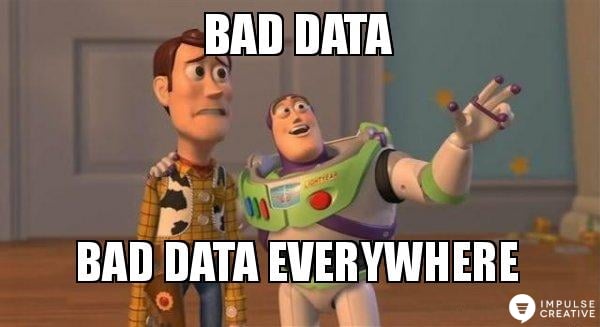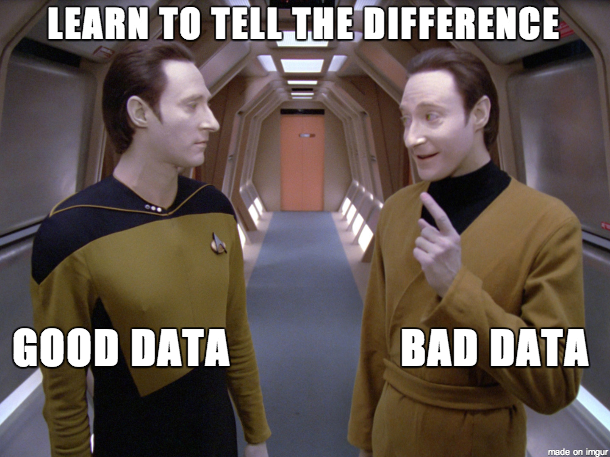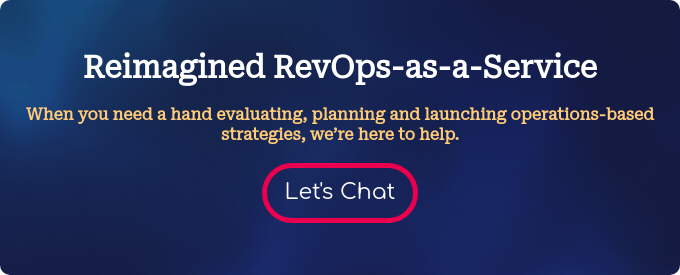Bad data can cost your business dearly. Keeping your data clean is critical.
Only 29% of companies believe that their current customer or prospect data is inaccurate in some way. It’s actually higher than that— that’s just how many companies believe their data is bad.
Why is Bad Data a Problem?
Low-quality data causes a lot of waste in organizations across all industries. In fact, a recent study showed that bad data may cost companies in the United States as much as $3 trillion per year.

Did you know that roughly 20% of the average contact database is dirty?
For example, if your company has an average of just 5,000 contacts, bad data could be costing you close to $100,000 a year!
Any company that collects a decent amount of customer data should perform regular audits to evaluate all that information. Without it, you could have huge amounts of waste in your marketing and sales budgets and never know it.
What is Data Cleansing?
Data cleansing—also called data cleaning—is the process of first identifying, then removing or correcting inaccurate records from a database, dataset or table. It begins with recognizing unfinished, unreliable, inaccurate or non-relevant parts of the data and then restoring, remodelling, or removing the dirty data.
You can perform data cleansing techniques as batch processing through scripting or interactively with data cleansing tools.

Once finished, your dataset should be uniform with other related datasets in your operation. The discrepancies identified or eliminated may have been caused by user entry mistakes, corruption in storage or transmission, or by various data dictionary descriptions of similar items in various stores.
Benefits of Data Cleansing
Clean data leads to several (business) health benefits. Here are a few things you can look forward to after a good data cleansing:
- You will remove major errors and inconsistencies that are inevitable when multiple sources of data are getting pulled into one dataset.
- Using tools to cleanse your data will increase efficiencies since your team will be able to quickly get what they need from a clean database.
- Fewer errors means happier customers and fewer frustrated employees.
- You can map the different functions and what your data is intended to do, and where it is coming from your data.
Data Cleansing Activities Your Business Should Perform
Want clean data? It’s more than just a yearly audit. To truly reap the benefits of data cleansing, your organization should perform certain data cleansing activities consistently.
A couple of great guidelines to follow is to focus on your top metrics. What is your company’s overall goal and what is each member looking to achieve from it? A good way to start is to get all the interested parties involved in a brainstorming session.
When you’re ready to move forward, follow some best practices when it comes to creating a data cleansing process and learn to tell the difference between good data and bad data..

1. Monitor Errors
Accurate record keeping is critical. Keep a record and look at trends of where most errors are coming from within your business. This will make it a lot easier to identify fix the incorrect or corrupt data. Monitoring errors is vital if you’re integrating other solutions with your business software, so that errors don’t clog up work across other departments.
2. Standardize Your Data Entry Processes
What would happen if you started with accurate, clean data in the first place? You can when you standardize the point of entry and check the importance of it. By standardizing your data process you will ensure a good point of entry and reduce the risk of duplication, bad records and other dirty data issues.
3. Validate and Maintain Data Accuracy
Once you’ve cleaned your existing database, validate the accuracy of your data. Research and invest in data tools that allow you to clean your data in real-time. Some tools now even use AI or machine learning to better test for accuracy.
4. Scrub for Duplicate Data
Identify duplicates, since this will help you save time when analyzing data. You can avoid this by researching and investing in different data cleansing tools that can analyze raw data in bulk and automate the process for you.
5. Analyze Results
After your data has been standardized, validated, and scrubbed for duplicates, use third-party sources to append it. Reliable third-party sources can capture information directly from first-party sites, then clean and compile the data to provide a more complete picture for business intelligence and analytics.
6. Communicate with Your Team
As with any project, communication is key. Make sure you communicate the new standardized cleaning process to your team. Now that you’ve scrubbed down your data, it’s important to keep it clean. This will help you develop and strengthen your customer segmentation and send more targeted information to customers and prospects, so you want to make sure you get your team in line with it.
7. Include a Feedback Process
Your team would also benefit to a feedback process. Every organization should build a process that controls the places from where incorrect information is reported and then updated into the database.
For example, you can establish a feedback mechanism for emails that go out but remain undelivered due to an incorrect address, so that it gets reported and the invalid email address is cleaned from the customer data.
Keep Your Data Clean
These data cleansing activities, if carried out consistently can let you turn your raw, dirty data into helpful, useful and manageable information.

Although the process can be difficult, it’s beneficial. That’s why your business should not skip this core data management function. All the data cleansing activities that are mentioned above will provide you with cleaner customer data which will act as a critical part for contributing to the business growth.
Cleansing the data not only gives you good quality data but it also brings uniformity in the data sets that are merged from different sources. Also, your job of maintaining and storing good quality data doesn’t simply end with cleaning the data. You need to take utmost care of the incoming data so that they are consistent with the similar data sets that are used by the organization.
Stay vigilant. And if your team needs help cleaning up your database and implementing a strong data management process, we’re here to help.





